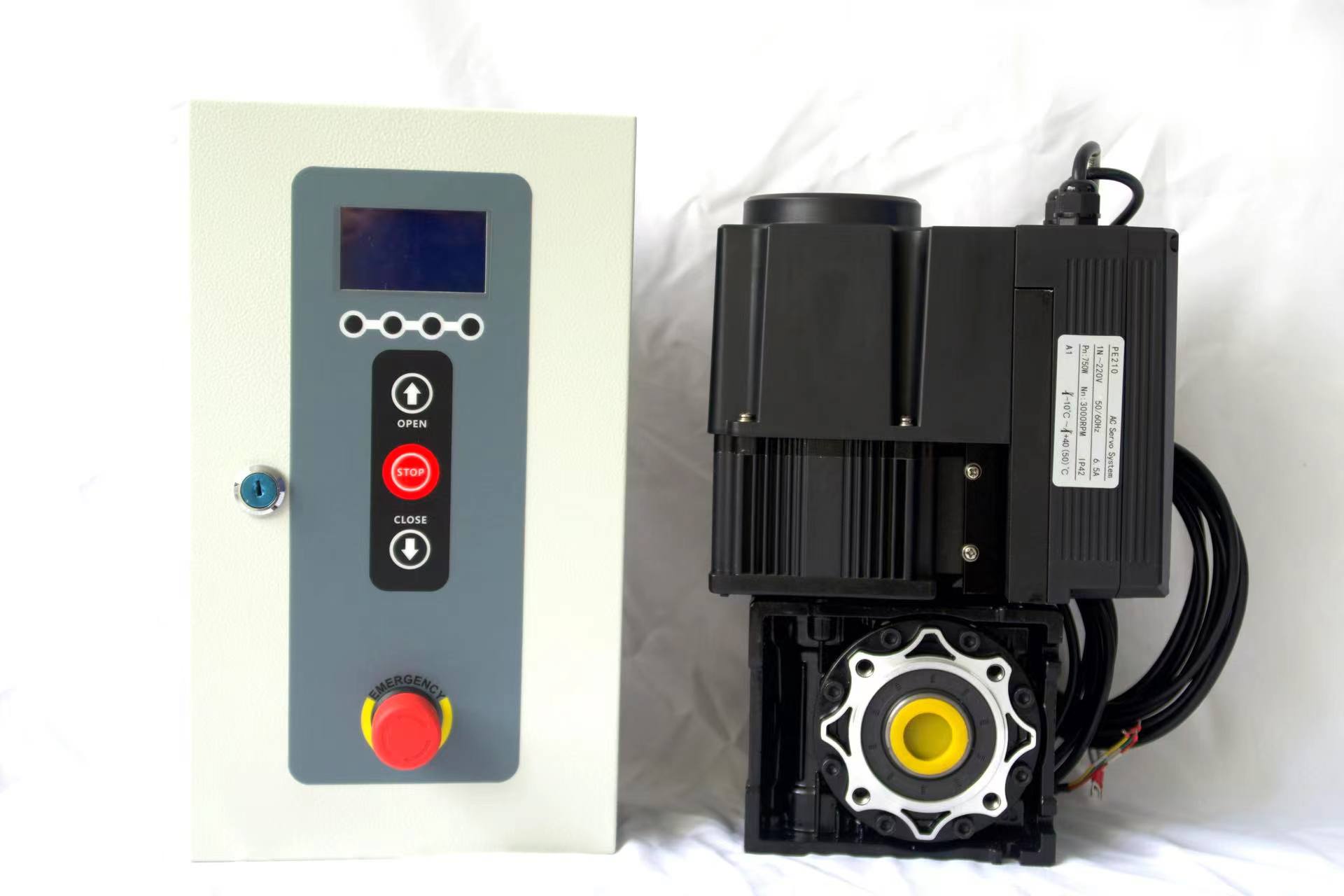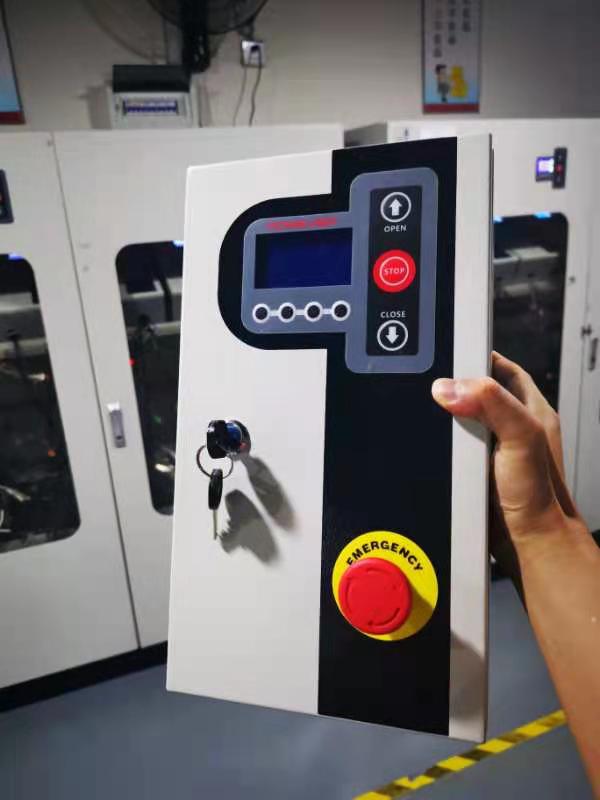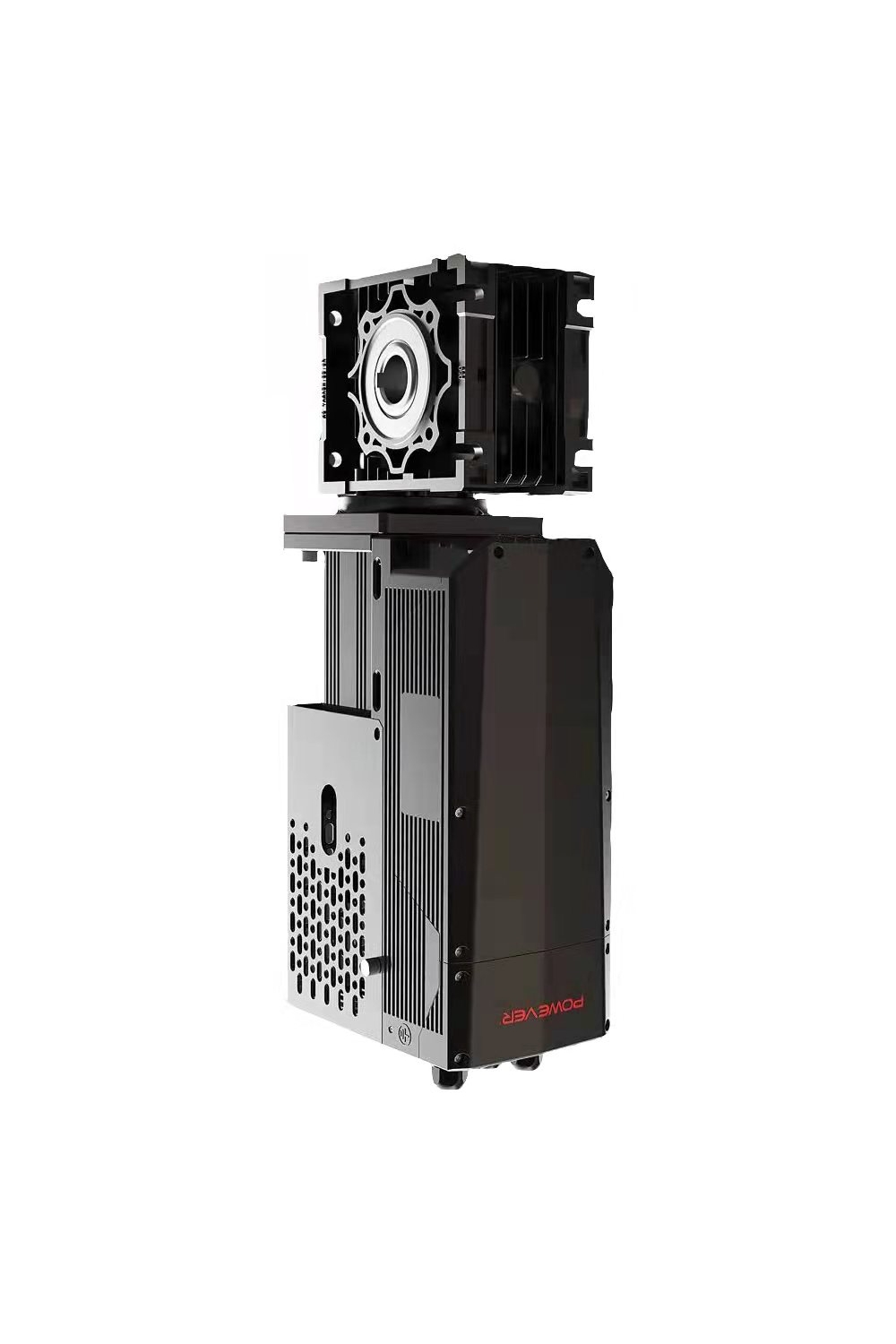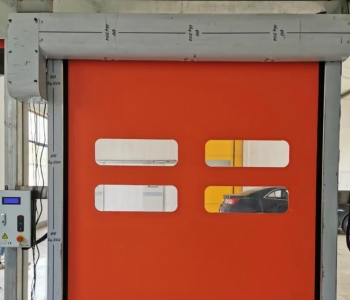Product Categories
Telephone
+8617538627299
User Guide for Motor Control Cabinet in Rapid Roll-Up Doors
- category: Product Categories
1. Basic Functions and SpecificationsCore FunctionsOperation Control: Regulates door curtain lifting/lowering speed (standard ra...
-
Product Details
-
contact us
1. Basic Functions and Specifications
Core Functions
Operation Control: Regulates door curtain lifting/lowering speed (standard range: 0.6–1.2 m/s) via a frequency inverter or PLC module.
Limit Positioning: Utilizes an encoder or mechanical limit switch to precisely set open/close positions. Encoder-based systems retain settings during power outages.
Mode Switching: Supports manual (for debugging) and automatic modes (with adjustable delay closure: 0–60 seconds).
Technical Parameters
Power Supply: AC220V±10% or AC380V (must match door power requirements).
Compatibility: Interfaces with radar, vehicle detection loops, infrared sensors, and safety light curtains.
2. Operation Procedures
Manual Mode
Debugging Steps:
Emergency Operation: Use the manual override handle/chain during power outages.
Switch to manual mode; use “UP/DOWN/STOP” buttons to adjust the door position.
Configure limit switches or encoder parameters via the control cabinet’s internal menu.
Automatic Mode
Door ascends to the upper limit, then closes after a preset delay (default: 0–60 seconds).
Curtain rebounds upon detecting obstacles (via infrared or light curtains) and retries closure after a delay.
Triggers: Activated by radar, vehicle detection loops, or infrared sensors.
Logic:
3. Safety Mechanisms
Anti-Crush Protection
Infrared Detection: Stops and reverses the door if an obstacle interrupts the infrared beam during descent.
Safety Light Curtain/Edge Sensor: Halts operation upon detecting obstructions beneath the door.
Interlock Function
Prevents simultaneous opening of linked doors (e.g., in dual-door systems).
4. Troubleshooting
Door Unresponsive
Verify power supply and reset the inverter if overloaded.
Inspect terminal connections for looseness or short circuits.
Limit Malfunction
Encoder Mode: Check wiring and recalibrate limits via the encoder setup.
Mechanical Limit Mode: Adjust switch travel or replace damaged contacts.
Button Failure
Test button circuits for breaks or replace faulty buttons.
5. Maintenance
Routine Checks
Monthly: Inspect limit accuracy, sensor sensitivity, and lubricate tracks.
Clean tracks and curtains to prevent debris buildup.
Component Lifespan
Inverter/PLC: Replace after ≥500,000 start-stop cycles.
Brake Pads: Replace if thickness falls below 2 mm.
Critical Notes
Safety: Do not pass through or linger near the door during operation.
Emergency Override: Use manual chains or cranks in emergencies.
Non-Experts: Avoid disassembling internal circuits without qualified personnel.
This guide synthesizes industry-standard practices. Always refer to the specific device manual for detailed instructions.
Products Recommended
Hot info
- [2025-10-15] Durable PVC Fast Rolling Door Fittings for Enhanced Security
- [2025-10-15] Automatic Repair of Zipper Door Plastic/Polymer Rails
- [2025-10-15] Smart Automatic Door Sensor for Fast Rolling Access Control
- [2025-10-15] Soft Fast Gate Control System 1.5kw Servo Motor and Control Box
- [2025-10-15] Automatic Access Control Square Surface Mount Infrared Non-Contact Switch
- [2025-10-15] Explosion-Proof Reinforced Self-Limiting Electric Heating Belt
- [2025-10-15] Explosion-Proof Shielded Self-Controlling Temperature Electric Heating Belt
- [2025-10-15] Heating Belt for Anti-Freezing, Heating and Heat Preservation of Cold Storage Doors
- [2025-10-15] 40W flame retardant explosion-proof self-limiting electric heating belt
- [2025-10-15] High Speed Door Zippers Industrial Door Zippers
- [2025-10-15] Safety Beam Sensor Use for Automatic Door
- [2025-10-15] Wireless Hand Sensor Switch For Automatic Door











